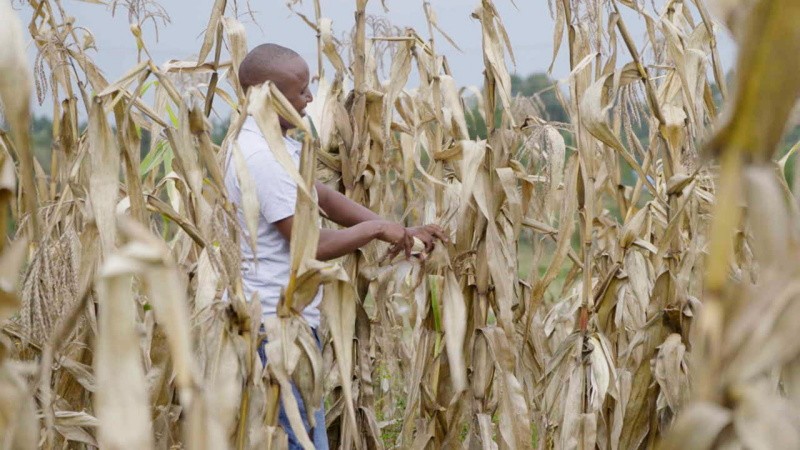AGRA Kenya has announced its 5-year plan to enhance the resilience of smallholder farmers by strengthening market systems and facilitating an enabling policy environment.
This is in recognition that many Kenyans depend on agriculture for their livelihood, yet sector inefficiency is widespread across most regions and the rest of the country.
Farmers cannot access reliable markets; buyers cannot access reliable markets; they cannot source adequate quantities of produce; and intermediaries cannot cost-effectively provide services.
For instance, maize and sugarcane are the most important crops in Western and North Rift Kenya, with maize being the main food crop.
Farmers are not able to increase their productivity unless the problems of plant diseases, reducing soil fertility, and increasing soil acidity are overcome.
The result is supply chain disorganization that depresses household income, increases food insecurity and hinders business development.
Alternative farming technology is rarely adopted because farmers lack adequate access to credit, inputs, and markets.
Water is a limiting factor. Farmers with access to water and efficient water management technologies can effectively practice crop diversification.
Several hindrances include lack of awareness, lack of institutional framework in terms of non-existent or poor policies at national and local levels, information gaps, low investment in research and development and lack of private sector participation.
Over 95 per cent of smallholder farms in Kenya show severe depletion of essential soil nutrients – nitrogen, phosphorous and potassium. Moreover, Kenya’s agricultural soils have dangerously low soil organic matter and exhibit worrying trends of acidification.
According to the Kenya National Bureau of Statistics (KNBS) 2022 report, the agricultural sector contributes roughly 22.4 per cent to the country’s total GDP, and smallholder farmers make up around 5.6 million of the overall farmer population.
Building Resilience of smallholder farmers
“Sustainable farming practices ensure farmers can sustain and improve their yields. AGRA aims to target farmers to adopt sustainable farming practices that build livelihoods today ad protect the environment for tomorrow,” reads part of the 2023-2027 strategic plan that is aligned with Kenya’s Vision 2030 blueprint.
The strategy builds on the achievements and lessons from Agra 2.0 strategy.
A key focus of the strategic plan is the enhancement of market systems. This entails improving farmers’ access to markets, optimizing value chains, and promoting market-oriented agricultural practices.
Strengthening market systems also involves supporting the development of agribusinesses and fostering connections between farmers, buyers, processors, and other market participants.
“Our delivery model will continue to scale and leverage proven approaches to deliver a competitive and inclusive agricultural transformation in Kenya. We are committed to working closely with smallholder farmers, the private sector, and other stakeholders to enhance food security and build the resilience of the agricultural sector,” AGRA President Dr Agnes Kalibata said during the unveiling of the plan in Nairobi, Kenya.
As part of our 5-years' strategic plan. Today, we unveiled #AGRAinKenya strategic plan. #AGRA was born in Kenya, 16yrs ago. The strategy includes; sustainable & regenerative agriculture, small holder farmers empowerment, youth in agri, partnerships & strengthening food systems… pic.twitter.com/htor8SjVWH
— AGRA – Sustainably Growing Africa’s Food Systems. (@AGRA_Africa) June 14, 2023
Furthermore, the plan acknowledges the significance of an enabling policy environment for smallholder farmers.
This entails advocating for policies and regulations that support agricultural development and address the specific needs and challenges faced by smallholder farmers.
AGRA Kenya will collaborate closely with governments, policymakers, and other stakeholders to promote favourable policies, such as improved access to finance, secure land tenure, and farmer-friendly regulations.
By establishing an enabling policy environment, AGRA Kenya aims to provide smallholder farmers with the necessary support and resources to enhance their productivity and resilience.
The plan also commits to focus on women and youth with the aim to provide support access to finance through the Rural Kenya Financial Facility that AGRA will be implemented with other partners.
“By fostering the inclusion of women and youth, we will empower them to become agents of change and catalysts for sustainable development.”
The plan targets 20 counties in the country during the period: Nyandarua, Nyeri, Meru, Tharaka Nithi, Machakos, Makueni, Murang’a, Nakuru, Kiambu, Isiolo, Samburu, Laikipia, Kakamega, Siaya, Vihiga, Nandi, Uasin Gishu Bungoma, Elgeyo Marakwet and Embu.
Challenges of Feeding Ourselves: Case of Smallholder Farming




